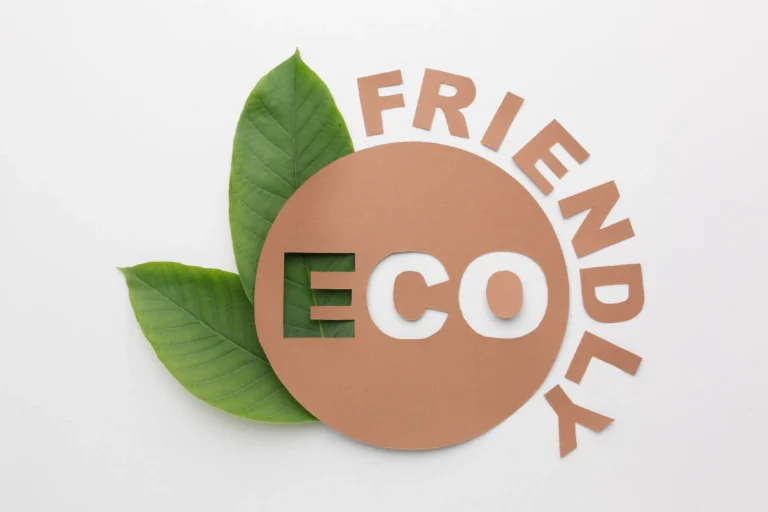Introduction
Clearing out your underwear drawer is a routine chore, but the usual toss-it-in-the-bin approach just adds to an already critical problem — Textile waste! What’s worse is every year, these stats keep on increasing with heaps of unwanted clothes, including those once-favorite undies, ending up in landfills. These clothing items rot in the environment for long, with some materials taking hundreds of years to break down. Yet, there’s a silver lining. For all of you wondering about what to do with old underwear, donating, recycling, or repurposing is the answer.
Whether your old intimates are worn out, gently used, or you’ve outgrown them, there are countless ways to give them a second life. Let’s explore how to bid goodbye to our old undies responsibly. From discussing steps to care for intimate wear to making them donation-ready or simply recycling underwear — We’ve got it all sorted for you!
Underwear Recycling: Environmental Imperative
The Environmental Toll of Discarded Underwear
Landfills are overflowing with trash that take decades to degrade — and huge lots of discarded underwear just adds to this burden, posing a substantial environmental threat. As these textiles slowly decompose, they release high amounts of methane emissions which are far more potent than carbon dioxide. That’s because the majority of undergarments are made from synthetic fibers, such as polyester and nylon, which are not biodegradable.
These materials linger in the environment for centuries, gradually releasing toxins and contributing to the mounting problem of textile waste. This form of waste is a significant source of pollution, harming our ecosystems and wildlife. Therefore, highlighting the critical need for mindful disposal and recycling strategies has become increasingly crucial to mitigate the toll of tossed-out underwear on our environment.
Why Recycling Underwear Matters
Salvaging tiny clothing like intimatewear might seem trivial, but in today’s climate crisis scenario, every initiative counts. The complexity behind underwear recycling arises from the fact that these garments contain a blend of materials, making the recycling process more challenging than that for other textiles.
However, despite these obstacles, finding ways to sustainably dispose of old and tattered undergarments is essential. That’s because, doing so helps reduce the environmental burden on natural resource extraction as we divert existing waste into fresh wearables. Finding effective ways to recycle intimates is imperative for advancing our ecological conservation efforts.
The Scale of the Issue: Textile Waste Statistics
The sheer volume of textiles dumped in landfills across the world every minute is staggering, with 92 million tons of waste generated annually. Among this, a significant portion is clothing, including everyday items like underwear. Surprisingly, these items account for a considerable percentage of the total textile waste, stressing the urgent need for dedicated recycling initiatives.
Can You Donate Underwear?
Yes, of course, you can donate underwear. But it’s important to approach this with careful consideration to ensure your contributions are useful and respectful. Here’s how to navigate the process:
Assessing Underwear Condition for Donation or Recycling
Check the fabric condition, elasticity, and cleanliness of your underwear. If they’re lightly worn, free from damage, and still hold their shape, they could be great candidates for donation. Otherwise, recycle underwear, especially if they’re made of materials that can be repurposed.
Preparing Your Underwear for Donation
If your intimates meet the above criteria and turn out eligible for donation, then wash them thoroughly before proceeding. Use a gentle detergent and opt for a temperature that’s high enough to kill bacteria but won’t damage the fabric. Make sure they are completely dry to maintain fabric integrity. Remember to organize underwear by fabric type, condition, and size. This step helps donation centers to process and distribute donations among people in need more efficiently.
Guidelines for Donating Underwear
Only donate new or gently used underwear that’s free from damage and stains. Some organizations have specific needs or restrictions when it comes to accepting intimatewear, so it’s wise to check their criteria in advance. Research local shelters, charities, and organizations around your region that welcome underwear donations. Their websites often provide details on their mission and specific donation guidelines. There are many clothing brands, non-profit organizations, and online thrift shops like ThredUP, I Support The Girls, Free The Girls, etc., that gladly accept “good condition” intimates.
How to Prepare Your Old Underwear for Recycling
If your underwear isn’t suitable for donation, recycling is the next best option. The preparation is similar to donation — just make sure the items are clean. However, you’ll need to remove non-textile elements (like elastic bands) and sort by material type to facilitate the recycling process.
How to Recycle Underwear: Practical Tips
Recycling underwear is a proactive step toward environmental sustainability, but it requires a bit of know-how. Here’s how you can make sure your old undies find new life in a responsible and effective way:
Preparing Underwear for Recycling
- Clean: Start by laundering your intimatewear to ensure they are clean and free from contaminants.
- Assess: Check for non-recyclable components such as metal clasps or plastic decorations, and remove them if possible.
- Sort: Organize your underwear by material type – polyester, cotton, etc. This segregation is crucial for the recycling facilities to efficiently process the materials.
- Join programs: Participation in recycling programs adds another layer to the effort. You can contribute to underwear recycling initiatives through mail-in programs or local drop-off points.
Understanding the Recycling Process
- Mechanics of Textile Recycling: Once the underwear arrives at a recycling facility, it undergoes a thorough sorting process based on material composition. Fabrics are then shredded into fibers, a stage where the transformation begins. These fibers can be repurposed into new products such as industrial rags, insulation materials, or even woven into new fabric for clothing.
- Challenges and Solutions: Recycling underwear is not without its challenges. The mixed materials often found in underwear present a significant hurdle, as do concerns over hygiene. Recycling facilities tackle these issues head-on, employing specialized equipment to separate materials and ensure the end products are clean and safe.
Finding Underwear Recycling Locations
- Local Recycling Centers: Locating a recycling center that accepts underwear might seem daunting, but resources like Earth911 make it easier. You can quickly find nearby facilities equipped to handle textiles by inputting your ZIP code. For those looking for specialized programs, a number of organizations have stepped up to address the gap in underwear recycling. These programs often provide detailed guidelines on what types of underwear they accept (e.g., all fabric types, gently used) and the condition they need to be in. Some may have specific instructions for preparation or packing, ensuring the process is as efficient and hygienic as possible.
- Specialized Recycling Programs: Several organizations specialize in textile recycling. For example, TerraCycle offers a Zero Waste Box for fabrics, including underwear. They are known for recycling the hard-to-recycle clothing items. The Bra Recyclers is another organization that focuses on recycling and donating bras. They offer guidance and accept different types of underwear. Similarly, many underwear and clothing brands have charity programs and initiatives that recycle or repurpose old garments.
Make Your Underwear Last Longer through Sustainable Practices
Caring for your intimatewear not only respects your investment but also aligns with sustainable living principles. Whether you decide to donate or recycle your undies, using them mindfully acts as a vital step to make sure they are disposed of well once you’re done using them. Here’s what you can do to extend the life of your intimates through conscious practices:
Choosing Eco-Friendly Underwear Brands
- Recyclable and Biodegradable Options: Opt for environmentally sustainable brands, offering underwear made from recyclable or compostable materials. This choice ensures easier end-of-life disposal.
- Brand Commitments: Support labels with a clear commitment to the planet, utilizing organic materials, ethical manufacturing, and measures to minimize carbon footprints. Such efforts make a significant difference in reducing the ecological impact of discarded intimatewear.
Maximizing Underwear Lifespan: Care and Maintenance
- Washing Instructions: Preserve the life and look of your underwear by using eco-friendly mild detergents and hand-washing them with normal temperature water. Refrain from using harsh chemicals like bleach and use vinegar for spot treatment. If you’re tempted to throw your undies in the washing machine, then put them in a pillowcase or soft cotton bag before adding them in your laundry lot. Such gentle wash techniques help maintain fabric strength, color and shape. Also, it’s always best to check the tag on the undies to understand specific ‘wash and care’ instructions.
- Drying Techniques: Air-drying is preferable to machine drying, not only to conserve energy but also to prevent fabric wear. Simply, spread out underwear in a well-ventilated area for wrinkle-free drying.
- Storage Suggestions: Keep underwear in good shape by folding them neatly and keeping them organized in a section. Avoid overcrowding drawers to maintain their form and elasticity.
Making Sustainable Purchasing Choices
- Material Considerations: Choose to use underwear made from sustainable and skin-friendly materials such as organic cotton, bamboo, or recycled fabrics. These choices significantly reduce the environmental footprint of resources from production to disposal.
- Supporting Ethical Brands: Spend some time researching brands that value green materials and ethical labor practices. These brands often go further to ensure their production and distribution processes have minimal environmental impacts.
Innovative Ways to Repurpose Old Underwear
Finding some out-of-the box ways to repurpose old underwear can turn what might seem like waste into valuable resources for your home and beyond. Here are some creative and sustainable uses for those retired intimates:
Using Underwear for Household Requirements
- Cleaning Rags: Use old, clean underwear as cleaning rags by cutting them into pieces. This offers an eco-friendly alternative to disposable wipes, perfect for dusting, polishing surfaces, and tackling spills. The soft fabric is gentle on all surfaces and can be washed and reused, reducing waste. Plus, your pockets are going to love this hack.
- Plant Ties: Strips of fabric from old underwear can serve as gentle, yet durable, ties for supporting plants in the garden. This method provides an eco-friendly solution for gardeners, ensuring plants are supported without damaging their stems and repurposing fabric that would otherwise end up in landfills.
Creative Crafting with Underwear
- Quilting and Patchwork: The fabric from old underwear, especially if it’s soft and patterned, is ideal for quilting squares or patchwork projects. It’s a great way to recycle material, add unique textures and patterns to your creations, and commemorate your favorite pieces. Don’t feel so gross about it; just give it a try!
- Stuffing Material: Repurpose old underwear as stuffing for homemade toys, pet beds, or decorative pillows. This approach not only reduces waste but also provides a budget-friendly alternative to buying new stuffing material, making your crafting projects more sustainable.
Upcycling for Personal Use
- Hair Ties and Bands: Elastic bands from underwear can find a new life as hair ties or for use in various crafting projects. This simple repurposing idea is a great option to extend the life of the elastic while providing a practical solution for when you need to tie something off in a pinch.
- Exercise Bands: For those looking for a creative way to stay fit, sturdy underwear can be cut into bands to be used for light exercise or resistance training. This innovative approach not only helps in recycling but also in keeping your fitness routine exciting and cost-effective.
Final Thoughts…
As we wrap up, let’s remember how important it is to donate or recycle underwear instead of just tossing them away. We’ve shared some great tips to help you clear out your drawers in an eco-friendly way. From giving them a new purpose around the house, crafting with them, to passing them on to someone in need, there’s always a better option than the landfill. And hey, if you find your undies are 100% cotton or silk, you can even compost them after removing the elastic band. So, there’s really no reason for them to end up as trash. Let’s make a small but mighty change to our planet by choosing one of these smart ways to say goodbye to our old underwear. Remember, every little effort counts, even if it’s just a tiny piece of clothing!







Be Good Do Good – Fashion, The Right Way
Get the Be Good newsletter straight to your inbox. Learn about the fashion industry’s burning problems and sustainability tips, as well as new sustainable and ethical brands.